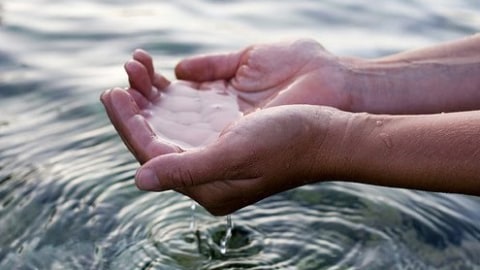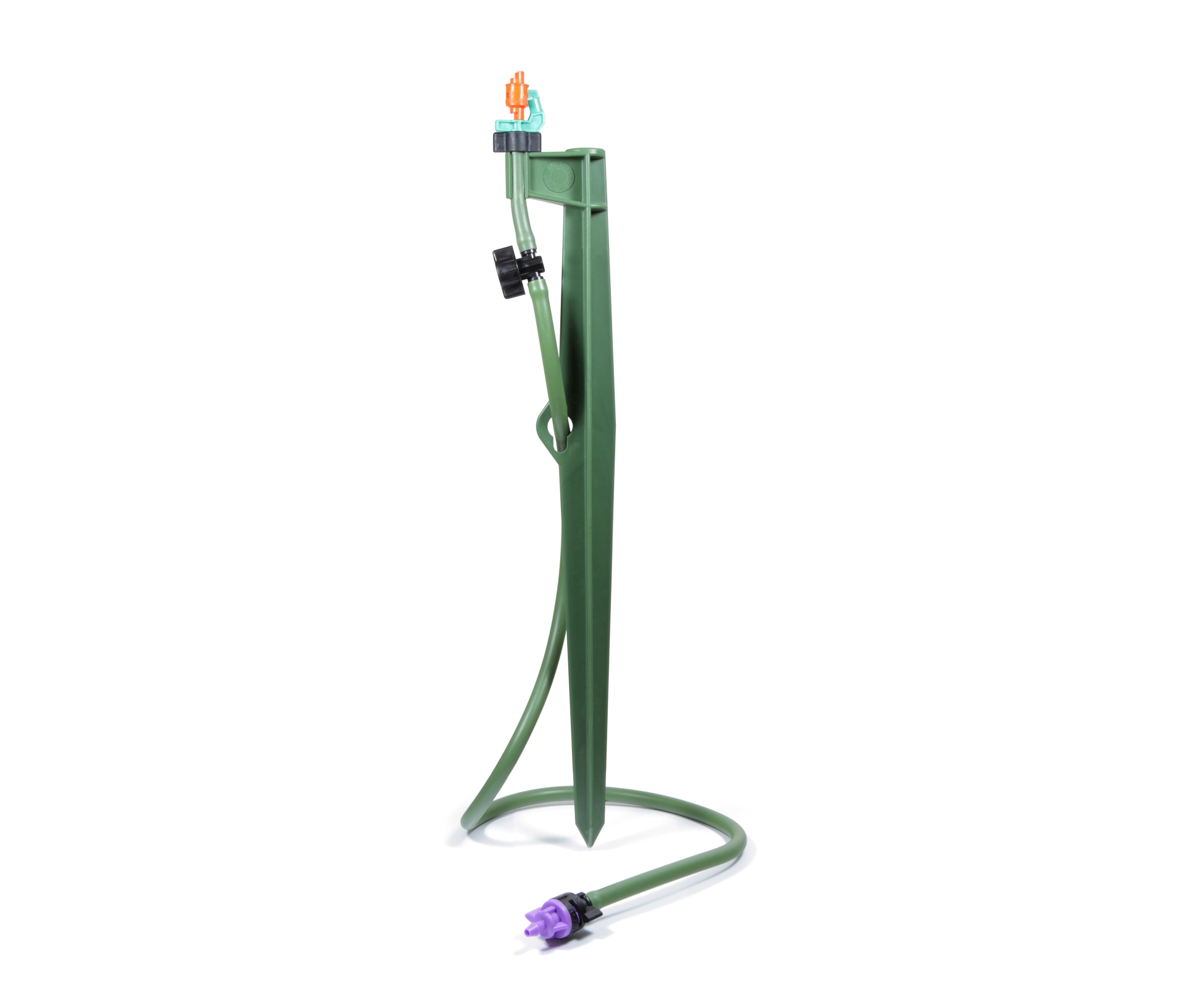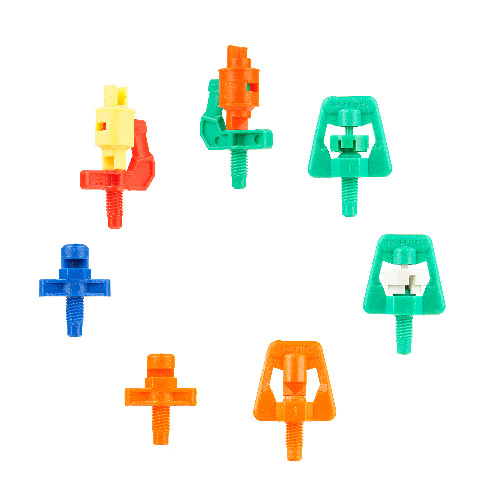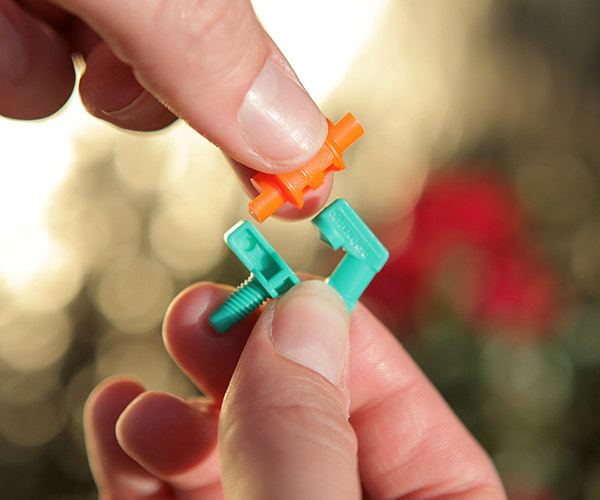Product Description
-
Micro-spray starter landscaper kit to water up to 250-sq ft of landscapes, gardens, shrubs, trees and more
-
Kit includes a product guide, showing the benefits and uses of a Mister Landscaper low-volume irrigation system
-
Includes hose fittings to attach 1/2-in poly tubing to your outdoor water faucet
-
50-Ft of 1/2-in poly tubing to run through landscapes to supply water to 5 green stake assemblies
-
5 Green stake assemblies each complete with 10 GPH flow controller, 27-in flexible green vinyl, 13-in green stake, on/off valve to adjust spray distance, vinyl locking collar and a 3-in-1, half circle 4-ft radius spray pattern
-
Kit includes 8 additional spray patterns with the 6 extra micro-sprays and 1 being the 3-in-1 micro spray
-
With the enclosed 1/2-in coupling, you can expand this kit by adding up to 250-ft more of the 1/2-in poly tubing and 30 stake assemblies
-
All contents of this kit proudly made in the USA
Features |
|||
|---|---|---|---|
|
Backflow Preventer
|
No
|
Pressure Regulator Included
|
No
|
|
Color/Finish Family
|
Green
|
Timer Included
|
No
|
|
Filter Included
|
No
|
Tubing Included
|
Yes
|
|
Fittings Included
|
Yes
|
Tubing Stakes Included
|
Yes
|
|
Installation Guide Included
|
Yes
|
Type
|
Drip irrigation landscape kit
|
|
Package Contents
|
Backflow valve, 1/2-in poly faucet fitting, 50-ft roll 1/2-in poly tubing, 1/2-in tee fitting, 1/2-in coupling, hole punch tool, 4 goof plugs, 5 complete green stake assemblies with half circle micro sprays, 2 end crimpers and 6 additional micro sprays
|
|
|

Water Conserving

High-Quality, Commercial-Grade

Easy Connection

Easy Installation

Excellent Coverage

The Ideal Irrigation Solution

Spray Pattern Selection

Reusable Locking Collars

Easily Maintained & Winterized

A Flexible System

An Expandable System
Micro Sprinkler Landscape & Shrub Kit Installation
Quick Installation Guide

Parts: 1/2-in Poly Faucet Fitting, 1/2-in Poly Tubing
After threading the Hose Fitting onto the Faucet or existing back flow, push the 1/2-in Poly Tubing onto the Poly Faucet Fitting and over the built-in O-ring. Hand-tighten the Locking Collar.

Parts: 1/2-in Poly Tubing
Now unroll the 1/2-in Poly Tubing through your landscape or garden.

Parts: 1/2-in Poly Tee Fitting
Use a 1/2-in Poly Tee Fitting to run the Poly Tubing in opposing directions. Push the 1/2-in Poly Tubing onto the Tee Fitting and over the built-in O-rings. Hand-tighten the Locking Collars.

Parts: No Parts Needed
Before installing the Landscape Stake Assemblies, flush the system to remove any dirt or debris.

Parts: Hole Punch Tool
To install the Stake Assemblies, begin by using the Hole Punch Tool to snap a hole in the 1/2-in Poly Tubing.

Parts: Landscape Stake Assembly
Next, insert the Stake Assembly's 10GPH Violet Flow Controller into the punched hole.

Parts: Landscape Stake Assembly
Now press the Stake Assembly into the ground at the desired location.

Parts: End Crimper
To finish, crimp the end of the 1/2-in Poly Tubing using the End Crimper. Easily remove to drain the water and winterize.
Anatomy of a Stake Assembly

Micro Sprays

Swap Tops: How To Change Patterns

Remove
Remove the Swap Top from the G-shaped Micro Spray.

Rotate
Rotate the Swap Top end over end.

Replace
Finally, replace the Swap Top, sliding it back onto the G-shaped Micro Spray.

Final Pattern
A third and final pattern can be achieved by removing the Swap Top altogether.
Increase Your Product Knowledge Base

System Design Help
This PDF contains basic information that will help you get started with system planning.PDF, 185 KB
Locking Collars
This PDF gives you a break down of how a locking collar connection should be made for a lasting, watertight seal.PDF, 1017 KB, 2 pages
What Goes First
This PDF explains the order in which Mister Landscaper products should be connected to an outdoor faucet. Some products mentioned are not included in this kit but can be purchased separately and used with this kit.PDF, 556 KB, 2 pages
Drip Irrigation Buying Guide

This guide is for reference purposes only. Be sure to read, understand and follow all manufacturer instructions. Additionally, depending on the manufacturer, some products may differ in name but not function. Where applicable we have tried to note these variations. Also, when designing a system based around the flow rates of your outdoor hose bibb faucets, know that there may be some variation from one manufacturer to the next in product water usage. Be aware of any manufacturer-specific system restrictions.

About Drip Irrigation

Drip Irrigation Methods:Under the heading “drip irrigation” there are, generally, two unique product categories: drippers and micro sprinklers. Sometimes, with some products, the line between these two is blurred. We’ll take a closer look at each category. Choosing the right product for a specific application is crucial for obtaining the best results with the highest savings.
Micro Sprinklers

Ideal Applications for Micro Sprinklers: Micro sprinklers can be used to water just about anything in your landscape and garden. Varied patterns, spray angles, and, in some cases, adjustable flow rates mean the creative possibilities are endless. To get you started, here are a few ideal applications for micro sprinkler irrigation: flower gardens, vegetable gardens, trees, shrubs, and all your landscape plants and flowers. With micro sprinklers, one of the big advantages is coverage. And with that coverage comes a lot of flexibility, especially in the way of spray pattern selection. Some micro sprinklers are great for general purpose watering, while others are designed for a specific purpose or space (Fig. A).

Kinds of Micro Sprinklers: Micro sprinklers can be divided into three different categories: One-piece micro sprinklers (no moving parts), spinners (water pressure causes the rotating head to spin), and swap tops (a removable top allows for three patterns to be created). While all micro sprinklers deliver water in a similar way, what makes each unique is the pattern it creates. Choosing the right micro sprinkler for the job helps you get the most from your drip irrigation system.
Anatomy of a Micro Sprinkler: Micro sprinklers have a very simple water delivery system. Water travels through the threaded stem then out the orifice, where it contacts the head of the micro sprinkler, resulting in a spray pattern (Fig. B). Spinners also function in this way. The only difference is the spinning head. Water is forced out the channel/channels, causing the head to spin (Fig. C).

Drippers

Ideal Applications for Drippers:Drippers are hugely versatile in that they are perfect for small jobs, yet they can still be used in larger, more demanding situations. Here are just a few ideal applications: Potted plants, hanging baskets, row gardens, tree rings, raised beds, and stand-alone plants and shrubs (Fig. D). Drippers tend to be a bit more specialized. Use them in places where a micro sprinkler may be overkill, or where you prefer a lower profile.

• PC or pressure compensating drippers control water output regardless of the water pressure in a particular line. This helps maintain consistency from dripper to dripper and plant to plant.
• Standard drippers, like in-line drippers and flag drippers, can be great additions to any low-volume irrigation system. But be aware, they are not pressure compensating.
• Drip tubing has pressure compensating drippers placed every foot. Each dripper delivers the same amount of water, regardless of where it is in the line. Drip tubing is available in 1/4-in and 1/2-in diameters.
Anatomy of a Dripper: Though there are multiple kinds and styles of drippers, they all function in a similar way. Water must enter. It must be slowed down (some amount of pressure reduction). And finally it must exit. To accomplish this, most drippers employ some type of labyrinth (turbulent flow) system (Fig. E). Note that just because some pressure reduction does occur, not all drippers are labeled “pressure compensating”.


Pot Stakes / Adjustable Drippers / Dripper Stakes

How to Choose:There are, certainly, some applications where one type of low-volume irrigation is more suitable than the other. But, there are a number of applications where either is perfectly acceptable. Know and understand the benefits of each micro sprinkler and dripper to design a system that works best for you and your garden or landscape. To further assist with the decision making process, below are lists of advantages and potential disadvantages to both drippers and micro sprinklers.
Pros & Cons of Low Volume Irrigation
• Drippers tend to have a lower profile compared to micro sprays. They are not as conspicuous in the landscaping.
• On average, a dripper uses only 1-2 gallons of water per hour. That is less than a micro spray.
• Drippers can be used where some micro sprays cannot, as in the case of smaller potted plants and hanging baskets.
• Drippers can be more efficient at watering individual small potted plants.
• Because by design drippers emit such a small amount of water, it can be difficult to see or know when a dripper is clogged. In some cases a plant may go into wilt or die before a problem is detected.
• Drippers are not as easily unclogged as micro sprays. Most PC Drippers are not cleanable and need to be replaced if they become clogged.
• Because they emit less water, an increased number of drippers are potentially needed to cover the same amount of area as a single micro spray. This could lead to increased installation time and cost.
• Micro sprays are significantly more adjustable than drippers, from size and shape of spray pattern to gallons per hour used.
• A single micro spray can easily cover multiple plants in a larger area, versus the one or more drippers required for a single plant.
• Micro sprays are easier to maintain beacause spray patterns are clearly visible, allowing for quicker detection of clogs or other problems.
• Clogged micro sprays and flow controllers can be easily cleaned for simple, hassle-free maintenance. Micro sprays can cool plants and efficiently water them at the same time.
• Micro Sprays are easier to install than drippers because stake assemblies come pre-assembled.
• Micro sprays have a larger profile and may be more visible in the landscape.
• Micro sprays are not ideal for certain applications, like small potted plants and hanging baskets.
Benefits of Drip Irrigation


Time Savings: With no gluing and digging required, and with the overall ease of installation, the time commitment for this DIY project is minimal. And the time saved by using a drip irrigation system, compared to hand-watering your landscape, garden, and potted plants, is significant.
Money Savings: A traditional irrigation system can be expensive and difficult to install, often requiring the help of a professional contractor. A drip irrigation system, on the other hand, is an inexpensive do-it-yourself project, which does not require the added cost of glues and special tools. And, if you have to pay for your water, less water used in your landscape and garden translates to more money left in your pockets.
Convenience and Flexibility: A complete drip irrigation system is easy to install, connects directly to an outdoor hose bibb faucet, and can be expanded and customized to meet your exact watering needs. Supply lines can be left on the surface or buried under a layer of mulch. There are no messy glues and no need to dig trenches or to cut into your home’s water lines. A drip irrigation system can be completely customized to water everything in your landscapes, flower gardens, vegetable and row gardens, raised beds, potted plants, hanging baskets and much more. The possibilities are endless.
Plant Health:Over-watering can lead to drowning, and an overly moist environment can promote fungal diseases. A drip irrigation system efficiently and effectively delivers water directly to the root zone, minimizing the potential for over-watering, making for happier, healthier plants.
How To Get Started


Easy Steps for Installing Micro Sprinklers:With a kit and easy to follow instructions, installing micro sprinklers in your landscape and/or garden is quick and simple.








Converting PVC to Drip










Drip Irrigation Components


Timers - Timers allow for a more hands-off approach to your watering routine. Timers can help prevent over watering and minimize wasted water. Digital timers turn the water on and off at preset times, while mechanical timers (egg timers) must be started but will shut off automatically. In either case, the timed watering function can also be bypassed. Some timers can connect to home automation systems for control from a computer or smart device. Certain smart devices can even regulate watering schedules based on weather activity and provide reports on water usage, making them ideal smart home solutions.
Backflow Prevention Valves / Anti-Siphon Fittings - These valves and fittings prevent the irrigation system's water from re-entering your household water supply and contaminating your drinking water when the system is turned off. They are a requirement in most areas.
Pressure Regulators - Pressure regulators help maintain consistent pressure as water exits your outdoor hose bibb faucet. Many drip and micro sprinkler irrigation systems require a lower operating pressure to prevent blowouts. Pressure regulators will reduce water pressure at a specific hose bibb faucet, making the water output compatible with the drip irrigation system. Without these devices the typical home water supply has too much pressure.
Filters - Filters prevent debris from entering your irrigation system. Unfiltered debris can clog tubing, drippers, micro sprinklers and other emitters. Filters are available with different mesh screen sizes. Most filters have removable screens for easy cleaning. Some pressure regulators even have built-in filters.
Hose Fittings - Hose fittings and adapters have 3/4-in female hose threads. They can be used to connect 1/2-in poly or 1/4-in tubing directly to an outdoor hose bibb faucet or to any other fitting or adapter with 3/4-in male hose threads.
1/2-in Tubing (includes: 1/2-in Poly / 1/2-in Distribution Tubing) - This tubing is typically used as a main water supply line. 1/2-in tubing is available in various lengths and can usually be buried under mulch or left exposed. Inner and outer diameters can vary depending on manufacturer (e.g. Mister Landscaper® 1/2-in poly is larger than Raindrip® 1/2-in poly), so be sure of system compatibility before purchasing.
1/2-in Fittings (for: 1/2-in Poly / 1/2-in Distribution Tubing) - Use a 1/2-in elbow fitting to create tight 90º corners, a 1/2-in tee fitting to send tubing in two opposing directions, or a 1/2-in coupler to extend a length of tubing or to repair damage. Some manufacturers offer reusable fittings, while others offer compression-style fittings. These fittings allow you to customize your system to meet your exact watering needs.
1/4-in Tubing (includes: 1/4-in Vinyl Tubing / 1/4-in Feeder Line / 1/4-in Distribution Tubing) - This tubing is typically used to take water from the main line to a dripper, micro sprinkler, or some other emitter. This tubing is available in various lengths and colors, allowing for further customization of your drip system.
1/4-in Fittings (for: 1/4-in Vinyl Tubing / 1/4-in Feeder Line / 1/4-in Distribution Tubing) - Use a 1/4-in elbow fitting to create tight 90º corners, a 1/4-in tee fitting to send tubing in two opposing directions, or a 1/4-in coupler to extend a length of tubing or to repair damage. These fittings can be removed and reused and help you to create your ideal drip irrigation system.
Flow Controllers - Flow controllers limit the amount of water used by an individual micro sprinkler and are available through some manufacturers.
On/Off Valves (for: 1/2-in Tubing / 1/4-in Tubing) - On/Off valves can be installed so that individual lines or zones can be turned off independent of the rest of the system.
Stakes (includes: Micro Sprinkler Stakes / 1/2-in Support Stakes / 1/4-in Support Stakes) - In a drip irrigation system, specially designed stakes are used to hold micro sprinklers, or to hold in place 1/4-in and 1/2-in tubing.
Risers - Risers—also called extensions—elevate micro sprinklers above the tops of plants for broader water application.
Micro Sprinklers (includes: Micro Sprays / Micro Sprayers / Misters) - Micro sprinklers are low-volume sprinkler heads that create various patterns for watering landscapes and gardens.
Micro Stakes (includes: Pot Spray Stake / Bubbler Stake / Adjustable Dripper Stake) - Micro stakes are generally smaller stakes with adjustable heads, which allow water output to be adjusted individually. They are ideal for a wide range of applications but are well suited for use in potted plants.
Drippers (includes: PC Dripper / Adjustable Dripper / Emitters / Bubblers / Drip Tubing) - Drippers emit small quantities of water directly to a plant’s root zone.
Emitters - Often, the word “emitter” becomes a catch-all term for many different types of drip irrigation. Most often it simply refers to some type of low-volume, end-of-line, water distribution product, like a dripper or micro sprinkler.
Tools (includes: Hole Punch / Cutters) - Drip irrigation systems are quick and simple to install with just a couple easy-to-use tools. Connect emitters and 1/4-in tubing using a hole punch to create insertion points in 1/2-in tubing. Use a cutter to make clean cuts in different size tubing. Some manufacturers offer multi-tools, which can do or assist with a number of specific installation jobs.
Plugs (includes: Goof Plug / Hole Plug / End Plug Fitting) - Plugs securely stop up holes in 1/2-in tubing, which may have been punched by mistake or left after removing a dripper, micro sprinkler, or other emitter. Plugs can also be used to end a line of 1/4-in tubing.
Replacement Parts - Sometimes small parts are lost or broken or simply need to be replaced. Spare parts are nice to have on hand. Some manufacturers offer replacement part kits.
Operation and Maintenance


Flushing the System: A stopped line or plugged emitter can shut down a drip irrigation system. If it happens and you aren’t aware, landscape and garden plants can be jeopardized. Flush the lines to clear debris during installation and before you begin using the system again in the spring. Clean filters regularly and be aware of the added potential for clogs if your water supply contains a lot of minerals.
Winterizing the System: In cold climates, it’s often recommended that a drip irrigation system be winterized. This can be as simple as allowing the water to drain from the end of a main line. Follow all manufacturer instructions for winterizing to prevent damage in freezing conditions. It is also recommended that battery operated timers be removed and stored indoors for the winter.
System Zones: Drip irrigation systems offer a lot of flexibility, but a single zone may not work for all of your landscape and garden plants. Separate zones let you accommodate plants with different watering needs. Zones can be created by using separate outdoor hose bibb faucets or by incorporating tee fittings and on/off valves.
Cleaning Drippers and Micro Sprinklers: Sometimes, despite your best efforts to keep your system free of dirt and debris, a dripper or micro sprinkler may become clogged. Some manufacturers offer specific tools for cleaning. But often, a small, straightened paper clip is all that’s needed to fix a clogged micro sprinkler. Clogged drippers usually need to be replaced. Follow manufacturer-specific instructions to prevent damage to product.
Repairing the System: Whether it’s because of a shovel, a lawnmower, an animal, or simply a change made to the layout, there may be times when you need to repair or replace part of your drip irrigation system. Some manufacturers offer kits with replacement parts. Regardless of the damage or change, drip irrigation systems are simple and easy to get back up and running. Couplings allow you to replace and/or extend sections of tubing. Smaller parts that are missing or broken can just as easily be removed and replaced. And holes punched by mistake or left after an emitter has been moved can quickly be filled using a goof plug or hole plug.
Soil Type Considerations: Not all soils are created equal. Be aware when designing and building a drip irrigation system that some soil types are better suited for drippers and other soil types for micro sprinklers. Here is a simple jar test to help determine your soil type. Begin by taking a soil sample from the area you wish to irrigate. Take that dirt and fill a glass jar approximately halfway (Fig. A). Now fill the jar the rest of the way with water (Fig. B). Finally, place the lid and shake the jar well (Fig. C).


Maximum Runs and System Restrictions

Increase Maximum Runs with Pressure Compensating Drippers: Pressure compensating drippers regulate the pressure from one dripper to the next. Water output is managed and stays the same at each dripper, regardless of PSI fluctuation or elevation changes. This feature is particularly important when running very long lines with lots of drippers, or when a line of drippers is run uphill away from the water source. In the example below (Fig. A)you can see what happens when non pressure compensating drippers are used. Water delivered at the beginning of the line, nearest the water source, is greater than the what is being delivered at the end of the line.



Drippers: 25 PSI
Adjustable Drippers / Adjustable Dripper Stakes / Bubblers: 25 PSI Pot Stakes:
25 PSI Micro Sprinklers: 50 PSI
Drippers: 5 PSI
Adjustable Drippers / Adjustable Dripper Stakes / Bubblers: 5 PSI
Pot Stakes: 5 PSI Micro Sprinklers: 15 PSI

Run up to 300 feet of 1/2-in main line tubing and install up to 50 (at 50 PSI / with 10 GPH Flow Controllers)
Run up to 300 feet of 1/2-in main line tubing and install up to 32 (at 25 PSI / with 10 GPH Flow Controllers)

Run up to 500 feet of 1/2-in main line tubing and install up to 500 .5-GPH PC Drippers
Run up to 500 feet of 1/2-in main line tubing and install up to 250 1-GPH PC Drippers
Run up to 250 feet of 1/2-in main line tubing and install up to 125 2-GPH PC Drippers

Run up to 100 feet of 1/2-in main line tubing and install up to 20 .5-GPH PC Drippers
Run up to 100 feet of 1/2-in main line tubing and install up to 13 1-GPH PC Drippers
Run up to 100 feet of 1/2-in main line tubing and install up to 5 2-GPH PC Drippers

Run up to 300 feet of 1/2-in main line tubing and install up to 32 (wide open at 25 PSI)
Run up to 300 feet of 1/2-in main line tubing and install up to 100 (2-GPH flow at 25 PSI)

Run up to 30 feet of 1/4-in main line tubing and install up to 3 (wide open at 25 PSI)
Run up to 30 feet of 1/4-in main line tubing and install up to 8 (2-GPH flow at 25 PSI)

Run up to 300 feet of 1/2-in main line tubing and install up to 65 (wide open at 25 PSI)

Run up to 30 feet of 1/4-in main line tubing and install up to 8 (wide open at 25 PSI)

Run up to 50 feet of 1/4-in drip tubing (Connect up to 10 individual 50-ft lines of drip tubing from a 400 foot run of 1/2-in main line tubing. Up to 15 feet of 1/4-in feeder line can be used before the 1/4-in drip tubing.)

Run up to 240 feet of 1/2-in in-line drip tubing (Connect up to 8 individual 30-ft lines of drip tubing from a run of 1/2-in main line tubing.)

Run up to 30 feet of 1/4-in feeder line tubing and insert up to 30 .5-GPH In-Line Drippers (Connect up to 13 individual lines from a 300 foot run of 1/2-in main line tubing.)


Drippers with Micro Sprinklers: 25 PSI
Drippers with Micro Sprinklers: 15 PSI


Connect a 1/2-in main line (up to 300 feet) and run it through your landscape or garden, installing flow controlled micro sprinklers and pressure compensating drippers as desired (Fig. D). Up to 32 micro sprinklers can be installed. Refer back to “How Many Drippers Equal One Micro Sprinkler” to calculate how many drippers can be used.

Connect a 50 PSI pressure regulator to the hose bibb faucet. Then connect a 25 PSI pressure regulator to one of the lines after the tee fitting. This line can then be used for Drippers, while the remaining 50 PSI line can be used for micro sprinklers.













